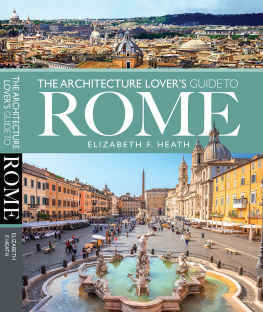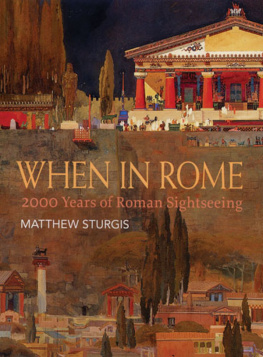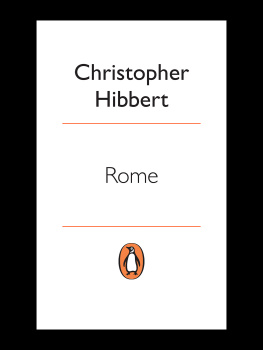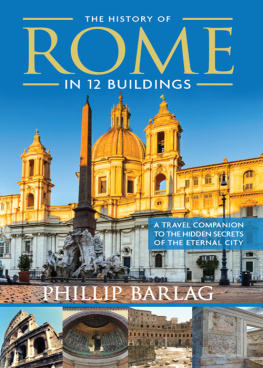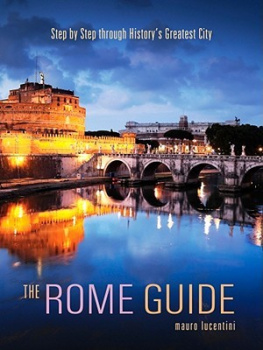This book addresses a critical era in the history of the city of Rome, the eighth century CE. This was the moment when the bishops of Rome assumed political and administrative responsibility for the citys infrastructure and the physical welfare of its inhabitants, in the process creating the papal state that still survives today. John Osborne approaches this using the primary lens of material culture (buildings and their decorations, both surviving and known from documents and/or archaeology), while at the same time incorporating extensive information drawn from written sources. Whereas written texts are comparatively few in number, recent decades have witnessed an explosion in new archaeological discoveries and excavations, and these provide a much fuller picture of cultural life in the city. This methodological approach of using buildings and objects as historical documents is embodied in the phrase history in art.
JOHN OSBORNE is a Distinguished Research Professor and Dean Emeritus in the Faculty of Arts and Social Sciences at Carleton University, Ottawa. He is a cultural historian of early medieval Italy with a focus on the material culture of Rome and Venice. His publications include studies of medieval use of the Roman catacombs, murals in churches such as San Clemente and Santa Maria Antiqua, cultural contacts between Rome and Constantinople, and the medieval understanding of Romes heritage of ancient buildings and statuary.
University Printing House, Cambridge CB2 8BS, United Kingdom
One Liberty Plaza, 20th Floor, New York, NY 10006, USA
477 Williamstown Road, Port Melbourne, VIC 3207, Australia
314321, 3rd Floor, Plot 3, Splendor Forum, Jasola District Centre, New Delhi 110025, India
79 Anson Road, #0604/06, Singapore 079906
Cambridge University Press is part of the University of Cambridge.
It furthers the Universitys mission by disseminating knowledge in the pursuit of education, learning, and research at the highest international levels of excellence.
www.cambridge.org
Information on this title: www.cambridge.org/9781108834582
DOI: 10.1017/9781108876056
The British School at Rome 2020
This publication is in copyright. Subject to statutory exception and to the provisions of relevant collective licensing agreements, no reproduction of any part may take place without the written permission of Cambridge University Press.
First published 2020
Printed in the United Kingdom by TJ International Ltd, Padstow Cornwall
A catalogue record for this publication is available from the British Library.
Library of Congress Cataloging-in-Publication Data
Names: Osborne, John, 1951 author.
Title: Rome in the eighth century : a history in art / John Osborne, Carleton University, Ottawa.
Description: Cambridge ; New York, NY : Cambridge University Press, 2020. | Series: British School at Rome Studies British School at Rome Studies | Includes bibliographical references and index.
Identifiers: LCCN 2020007252 | ISBN 9781108834582 (hardback) | ISBN 9781108819527 (paperback) | ISBN 9781108876056 (ebook)
Subjects: LCSH: Rome (Italy) History 4761420. | Rome (Italy) Description and travel. | Rome (Italy) Antiquities.
Classification: LCC DG811 .O83 2020 | DDC 945.6/3201dc23
LC record available at https://lccn.loc.gov/2020007252
ISBN 978-1-108-83458-2 Hardback
Additional resources for this publication at www.cambridge.org/
Cambridge University Press has no responsibility for the persistence or accuracy of URLs for external or third-party internet websites referred to in this publication and does not guarantee that any content on such |websites is, or will remain, accurate or appropriate.
Contents
Figures
All photographs are by the author unless otherwise indicated.
Plates
Santa Maria Antiqua, Rome: right side of apsidal arch (palimpsest wall).
Santa Maria Antiqua, Rome, right wall of the sanctuary: Saint Anne with the infant Mary.
Santa Maria Antiqua, Rome: Sickness of King Hezekiah.
Santa Maria Antiqua, Rome: niche with Madonna and Child.
Santa Sabina, Rome: narthex mural of Madonna and Child with saints and donors. Photo: Peter Coffman.
Santa Maria Antiqua, Rome: Theodotus chapel, general view. Photo: Gaetano Alfano/Sopritendenza Speciale per il Colosseo e larea archeologica centrale di Roma/Electa.
Santa Maria Antiqua, Rome: Theodotus chapel, detail of Christ from scene of Quiricus and Julitta tortured in the sartago.
Santa Maria Antiqua, Rome: Theodotus chapel, family of Theodotus on right wall, detail of boy.
Santa Maria Antiqua, Rome: Theodotus chapel, family of Theodotus on right wall, detail of girl.
Santa Maria Antiqua, Rome: right aisle, painted niche with the three holy mothers.
Santa Maria Antiqua, Rome: atrium, Pope Hadrian I and his guarantor.
San Clemente, Rome: right aisle of lower church, Madonna and Child in the niche.
Acknowledgements
My foremost debt is to the British School at Rome, which has welcomed me enthusiastically for more than four decades. Over that time, I have benefited from conversations with a number of the directors, and a great many of the residents; and the library, expertly directed by Valerie Scott, remains my favourite place in the world in which to read and to write. Indeed, the creation of this book began there in the spring of 2018, facilitated by the award of a Balsdon fellowship.
No scholar works in isolation, and over the years I have enjoyed the friendship and counsel of many who share my fascination with early medieval Rome. Sadly, some are no longer with us, among them Leonard Boyle, Caecilia Davis-Weyer, Richard Krautheimer, Tim Potter, and David Whitehouse. But I continue to rejoice in the friendship of many others who have contributed to my understanding in ways large and small, and in that regard I shall single out for mention Maria Andaloro, Antonella Ballardini, Claudia Bolgia, Giulia Bordi, Tom Brown, Robert Coates-Stephens, Marios Costambeys, Sible de Blaauw, Judson Emerick, Julian Gardner, Manuela Gianandrea, Federico Guidobaldi, Alessandra Guiglia, Ingo Herklotz, Lesley Jessop, Gregor Kalas, Dale Kinney, Rosamond McKitterick, Gillian Mackie, Maria Laura Marchiori, Maya Maskarinec, John Mitchell, Giuseppe Morganti, Tom Noble, amonn Carragain, Valentino Pace, Jo Story, Alan Thacker, Erik Thun, Ann van Dijk, and Vera von Falkenhausen. I am grateful to Michelle Duong for the plan of Santa Maria Antiqua included in this volume, to Peter Coffman and Giulia Bordi for their kind assistance in providing photographs, and to Angela Roberts for her meticulous care in catching numerous typographical errors and inconsistencies. Special thanks go to Claudia Bolgia, Rosamond McKitterick, and Tom Noble, whose excellent comments and suggestions have improved the text enormously. We did not always agree on every detail, but as Richard Krautheimer once memorably said to me, I dont like it when you agree with me, as then I cant learn from you.


